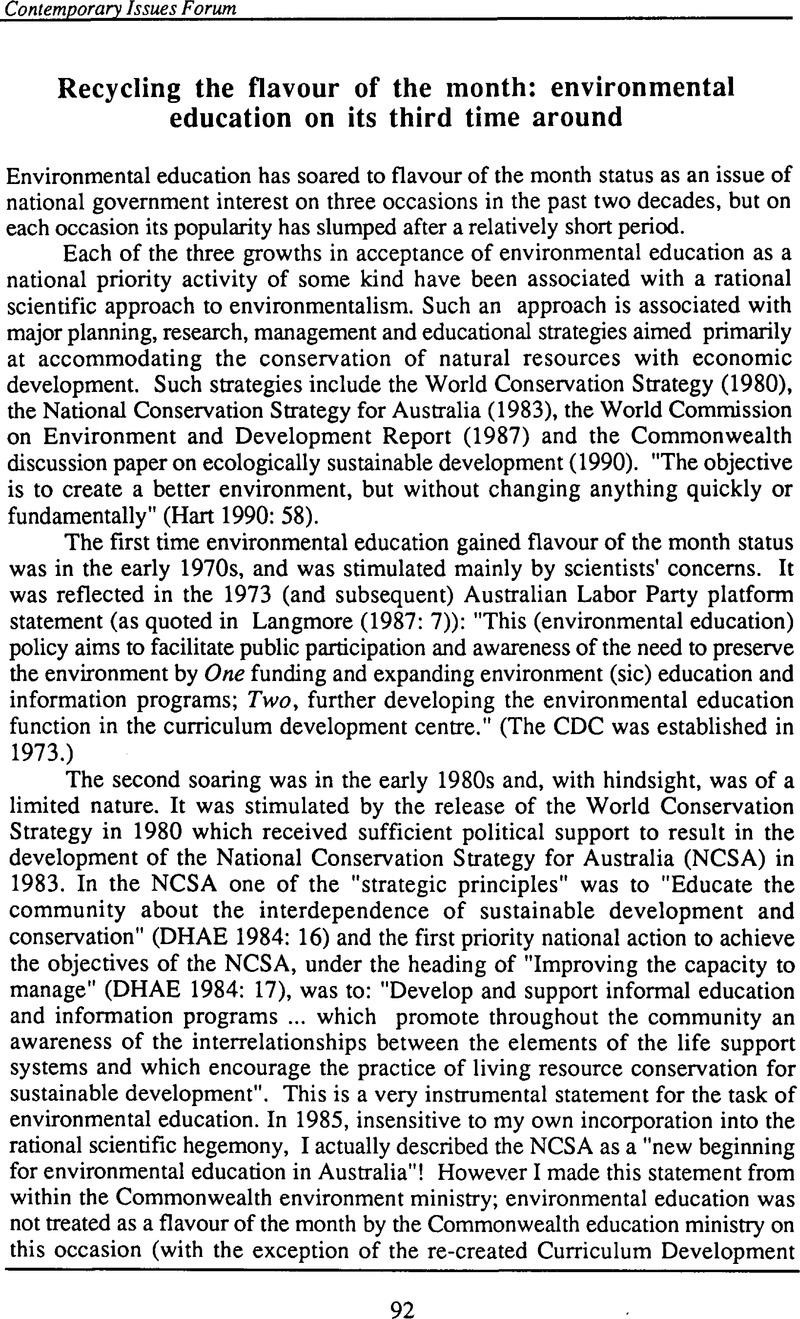Crossref Citations
This article has been cited by the following publications. This list is generated based on data provided by Crossref.
Gough, Annette Greenall
1992.
Sustaining Development of Environmental Education in National Political and Curriculum Priorities.
Australian Journal of Environmental Education,
Vol. 8,
Issue. ,
p.
115.
Barron, Deirdre
1995.
Gendering Environmental Education Reform: Identifying the Constitutive Power of Environmental Discourses.
Australian Journal of Environmental Education,
Vol. 11,
Issue. ,
p.
107.
Kumar, Ranjit
Gupta, Pratima
and
Jangid, Ashok
2020.
An empirical study towards air pollution control in Agra, India: a case study.
SN Applied Sciences,
Vol. 2,
Issue. 12,
Gough, Annette
2022.
Celebrating AAEE’s first president: Peter James Fensham AO.
Australian Journal of Environmental Education,
Vol. 38,
Issue. 1,
p.
129.
Gough, Annette
2024.
Changing Politics for Changing Times: Rethinking Research Stakeholders and Strategies for Environmental Education.
Australian Journal of Environmental Education,
Vol. 40,
Issue. 3,
p.
417.



